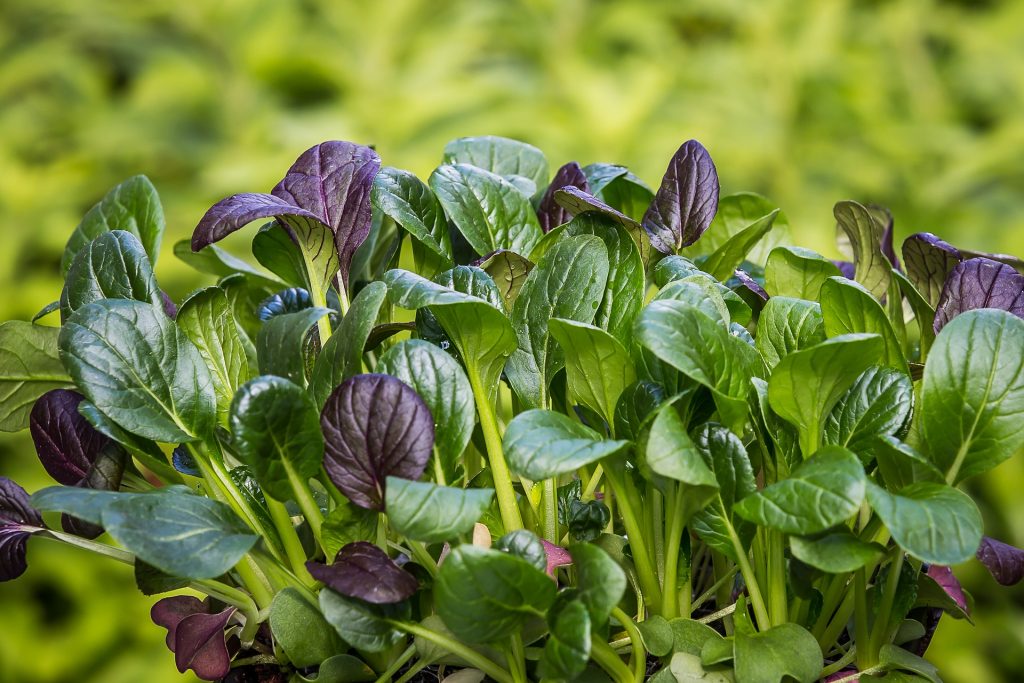 Folate refers to vitamin B9, an essential element manufactured by plants and yeast. Rich sources of folate include green leafy vegetables, certain yeast extracts, citrus fruit and animal liver and kidney. However, there are poorer dietary sources of folate that can contribute to folate intake because these foods are so commonly eaten. Potatoes and bread for example are quite low in folate, but because they are eaten in large amounts they can supply significant amounts of folate to the consumer. Folates in plants exist mainly as as 5-methyltetrahydrofolate, but also as formyltetrahydrofolate. In plants, the more common 5-methyltetrahydrofolate form may oxidise to 5-methyl-5,6-dihydrofolate and this oxidised form may represent a substantial amount of food folate. Ascorbic acid may reduce 5-methyl-5,6-dihydrofolate back to 5-methyltetrahydrofolate in the gut, and this may increase absorption significantly. Dietary folate is absorbed across the enterocytes of the gut and transported mainly to the liver where some passes into the bole.
Folate refers to vitamin B9, an essential element manufactured by plants and yeast. Rich sources of folate include green leafy vegetables, certain yeast extracts, citrus fruit and animal liver and kidney. However, there are poorer dietary sources of folate that can contribute to folate intake because these foods are so commonly eaten. Potatoes and bread for example are quite low in folate, but because they are eaten in large amounts they can supply significant amounts of folate to the consumer. Folates in plants exist mainly as as 5-methyltetrahydrofolate, but also as formyltetrahydrofolate. In plants, the more common 5-methyltetrahydrofolate form may oxidise to 5-methyl-5,6-dihydrofolate and this oxidised form may represent a substantial amount of food folate. Ascorbic acid may reduce 5-methyl-5,6-dihydrofolate back to 5-methyltetrahydrofolate in the gut, and this may increase absorption significantly. Dietary folate is absorbed across the enterocytes of the gut and transported mainly to the liver where some passes into the bole.

Food forms of folate include green leafy vegetables and yeast products. Animals eat plants and store some folates in tissues and as a result kidney and liver can also contain folates. Some multivitamins also contain natural folates, although most contain synthetic folic acid. Some foods are also fortified with folic acid. Where possible it is better obtain folates from their natural plant form. This relates to the fact that folic acid has a limited capacity to be converted to folate in the liver. The enzyme that performs this role is dihydrofolate reductase. When this enzyme becomes saturated with folic acid, some of the folic acid spills over into the circulation and blood levels of folic acid rise. The body cannot use folic acid in this form and there may be some detrimental effects for elevated levels of folic acid in the blood.
In the liver there is a limited capacity to store the the remaining 5-methyltetrahydrofolate in enterocytes. Most of the folate is released from the liver and transported mainly via attachment to albumin, and to a lesser extent other binding proteins such as macroglobulin and transferrin. Folates are also incorporated into red blood cells during their formation and so these cells can contribute to total blood levels. In peripheral tissue the absorbed 5-methyltetrahydrofolate is converted to mono glutamyl tetrahydrofolate by a vitamin B12 dependent enzyme. The mono glutamyl tetrahydrofolate is the biologically active form of the vitamin, and therefore a vitamin B12 deficiency can inhibit the availability of bioactive folate. Once inside the cells of the body, folates act as methyl donors in a number of reactions including histidine catabolism, purine and pyrimidine biosynthesis, the interconversion of glycine and serine, as well as homocysteine remethylation. Folic acid can also increase blood levels of folate.
Eat Well, Stay Healthy, Protect Yourself
RdB
